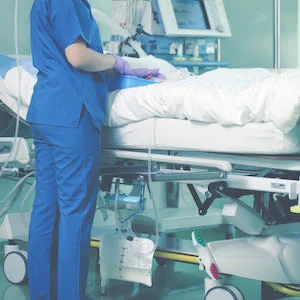Optimal positive end-expiratory pressure (PEEP) level during mechanical ventilation for COVID-19 pneumonia remains debated. A third of experts in a recent consensus statement supported a low-level PEEP for COVID-19-related acute respiratory failure (C-ARDS), with half of the panel remaining neutral without agreement on PEEP titration. However, the Surviving Sepsis Campaign guideline recommends using high level of PEEP for C-ARDS.
Ideally speaking, PEEP level should be guided by responses in lung volume and perfusion. Capnodynamic monitoring allows end-expiratory lung volume and effective pulmonary blood flow to be determined with ongoing ventilation.
A recent study assessed the feasibility of capnodynamic monitoring of the responses to increased PEEP on gas exchange in mechanically ventilated patients with moderate to severe C-ARDS.
Twenty-seven patients underwent capnodynamic monitoring of end-expiratory lung volume and effective pulmonary blood flow with a step increase in PEEP by 50% above the baseline. The primary outcome of the study was a > 20 mm Hg increase in arterial oxygen tension to inspired fraction of oxygen (P/F) ratio to differentiate between responders and non-responders. Secondary outcomes included changes in physiological dead space and correlations with independently determined recruited lung volume and the recruitment-to-inflation ratio at an instantaneous, single breath decrease in PEEP.
The results of the study show that the PaO2/FiO2 ratio increased > 20 mm Hg from PEEPlow to PEEPhigh in 15 patients (responders). The same was not observed for the 12 other patients (non-responders). There was no significant difference between PaO2/FiO2 among the responders and non-responders at PEEPlow for gas exchange and pulmonary mechanics. The PEEPhigh manoeuvre increased PaO2 in responders with an increase in PaO2/FiO2 ratio.
These findings show that in mechanically ventilated patients with moderate to severe C-ARDS, improved oxygenation in response to increased PEEP was associated with increased end-expiratory lung volume and pulmonary perfusion. Therefore, capnodynamic monitoring can be effectively used to assess physiological responses to PEEP at the bedside to facilitate individualised settings.
Source: Critical Care
Image Credit: iStock








